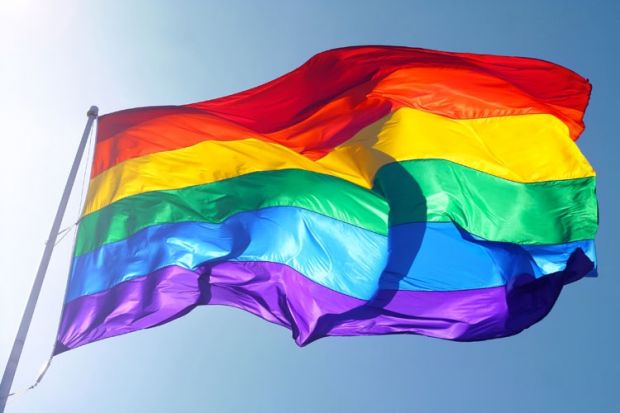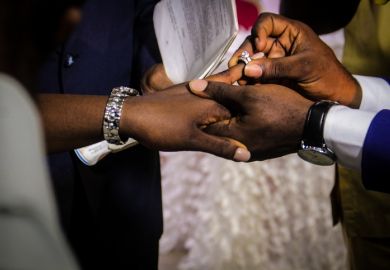Starting this summer, more than 500,000 students in the 34 institutions that make up the Washington State Community and Technical College System are being asked to answer optional questions about their sexual orientation and their gender identity on registration forms.
This is the first time that an entire US system of two-year colleges will track data on students who identify as LGBTQ – lesbian, gay, bisexual, transgender or queer. The change could send a powerful message to other universities and colleges around the US to follow suit, said Matthew Shrader, who was one of the five students who originally conceived the plan in 2011.
“If an entire state system is doing it, then I think it is going to start a movement,” said Mr Shrader, who previously attended South Puget Sound Community College and now is a student at the University of Washington.
In 2011, Elmhurst College, a private institution in Illinois, became the first college to ask such questions on an undergraduate admission application. One year later, the Massachusetts Institute of Technology also added a question about students’ sexual orientation/gender identity on its admissions application. In 2012, the University of Iowa became the first public institution to add questions about sexual orientation and gender identity. Some institutions – such as the Adler School of Professional Psychology ask students if they would consider themselves part of the LGBTQ community.
In May, Oregon’s House of Representatives approved a bill to require each public university, community college or other institution of higher education in the state to “allow all students, faculty and staff” to identify sexual orientation “on any forms used to collect demographic data that includes gender, race or ethnicity”. But the legislation stalled in the Senate.
The new questions that will appear on the Washington State two-year college registration forms are “What is your sexual orientation?” and “What is your gender identity?” The choices for the first question are bisexual, gay, lesbian, queer, straight/heterosexual and prefer not to answer. The choices for the second question are feminine, masculine, androgynous, gender neutral, transgender, other and prefer not to answer. Answering the questions is optional, and Mr Shrader emphasised that the responses are completely confidential.
The benefit of adding questions about sexual orientation and gender identity is twofold, Mr Shrader said. First, it allows colleges to gather data about LGBTQ students and track their academic success, enrolment and retention rates. This in turn can help college administrators better understand what support services, resources and activities they can provide to serve students in the LGBTQ community. The reason for asking, some educators say, is similar to the reasons colleges have for years asked about race, ethnicity and gender — to track successes and failures at recruiting and graduating different groups of students.
Advocates say that this recognition is an important step for colleges, especially since sexual orientation, unlike race, is often invisible, meaning the needs of LGBTQ students can go ignored.
“Colleges might be very surprised to see that they have this population of students and realise that they haven’t been doing anything for them,” said Jorge Valencia, the executive director of the Point Foundation, which provides scholarships to promising LGBTQ students.
If a college becomes aware that it has a number of transgender students, for example, it can take steps to address the needs of that community — such as creating gender-neutral restrooms and housing on campus, Mr Valencia said.
The executive director of Campus Pride, Shane Windmeyer, also praised the Washington community colleges. “Right now colleges do not know the academic retention and success rates of LGBT student populations — who encounter high rates of harassment [and] bias as well as encounter many high at-risk health concerns. Every college has the responsibility to address these issues and the time is now,” said a statement from Mr Windmeyer on the Campus Pride website.
The two newly added sexual orientation and gender identity questions can also help students feel comfortable and welcome in their college environment, Mr Shrader said.
“It sends a message loud and clear to a student: ‘My campus actually cares if I am gay or straight or lesbian.’ It lets a student know that there are services available and administrators that do care,” Mr Shrader said.
This was his goal when he and four other community college students presented their “Student Success Initiative” during the 2011 Washington Community and Technical College Students Legislative Voice Academy. The event gives students from the 34 Washington community and technical colleges the opportunity to come together and present ideas that they hope will impact students in the entire system. The top five ideas are then selected and put in a white paper, which promotes the Voice Academy’s priorities for the upcoming legislative session. One of the issues chosen was Mr Shrader’s and his colleagues’ recommendation to include LGBTQ demographic categories as part of colleges’ data collection.
In 2012, a task force was formed, which included student leaders as well as representatives from various state organisations. The task force members had to determine the language of the questions and answers, as well as issues of spacing on online and paper registration forms.
Originally, students wanted to put the sexual orientation and gender identity questions on the admissions application. But the task force decided that putting it on registration forms and collecting data on a quarterly basis would be more effective, Mr Shrader said. This decision was made since LGBTQ students are part of a group that is still “polarised”, and the task force did not want students to feel that they were not admitted to an institution for discriminatory reasons. Secondly, Mr Shrader said, sexual orientation and gender identity is something that is “fluid” and may change over time. And a person’s comfort level with his or her sexuality may also change over time. So collecting quarterly data is more effective than collecting it all only at the very beginning of a student’s college career, Mr Shrader said.
The “Student Success Initiative” is not state-mandated, said Laura McDowell, a spokeswoman for the Washington State Board of Community and Technical Colleges. Rather, the vice-presidents for student services at each of the 34 institutions internally agreed to move forward with the plan. Each college contributed about $2,000 (£1,300) each to pay for the programming required to add the LGBTQ questions to the shared student information system, Ms McDowell said. Some colleges have already put the questions on their registration forms, while others will do so by the end of the year, she said.
Valencia said adding the optional questions about sexual orientation will help bring awareness to a group that can often face challenges on college campuses.
“This is opening up a dialogue,” Valencia said.
Register to continue
Why register?
- Registration is free and only takes a moment
- Once registered, you can read 3 articles a month
- Sign up for our newsletter
Subscribe
Or subscribe for unlimited access to:
- Unlimited access to news, views, insights & reviews
- Digital editions
- Digital access to THE’s university and college rankings analysis
Already registered or a current subscriber? Login




